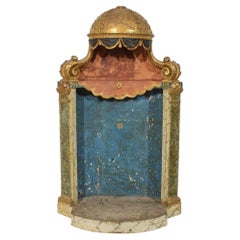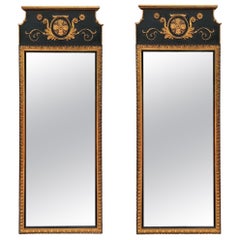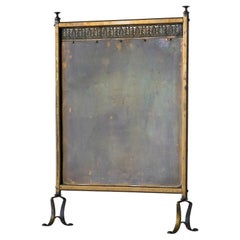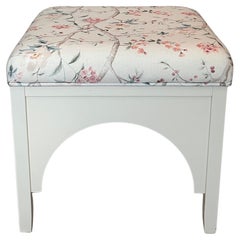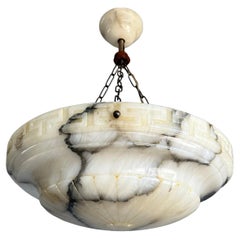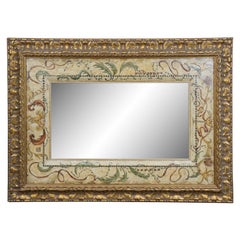Neoclassical Furniture
Neoclassical design emerged in Europe in the 1750s, as the Age of Enlightenment reached full flower. Neoclassical furniture took its cues from the styles of ancient Rome and Athens: symmetrical, ordered, dignified forms with such details as tapered and fluted chair and table legs, backrest finials and scrolled arms.
Over a period of some 20 years, first in France and later in Britain, neoclassical design — also known as Louis XVI, or Louis Seize — would supersede the lithe and curvaceous Rococo or Louis XV style.
The first half of the 18th century had seen a rebirth of interest in classical antiquity. The "Grand Tour" of Europe, codified as a part of the proper education of a patrician gentleman, included an extended visit to Rome. Some ventured further, to sketch the ruins of ancient Greece. These drawings and others — particularly those derived from the surprising and rich archaeological discoveries in the 1730s and ’40s at the sites of the Roman cities of Pompeii and Herculaneum — caused great excitement among intellectuals and aesthetes alike.
Neoclassical furniture is meant to reflect both grace and power. The overall appearance of neoclassical chairs, tables and cabinetry is strong and rectilinear. These pieces are, in effect, classical architecture in miniature: chair and table legs are shaped like columns; cabinets are constructed with elements that mirror friezes and pediments.
Yet neoclassicism is enlivened by gilt and silver leaf, marquetry, and carved and applied ornamental motifs based on Greek and Roman sculpture: acanthus leaves, garlands, laurel wreaths, sheaves of arrow, medallions and chair splats are carved in the shapes of lyres and urns. Ormolu — or elaborate bronze gilding — was essential to French design in the 18th and 19th centuries as a cornerstone of the neoclassical and Empire styles.
As you can see from the furniture on these pages, there is a bit of whimsy in such stately pieces — a touch of lightness that will always keep neoclassicism fresh.
Find antique neoclassical furniture today on 1stDibs.
Late 18th Century Italian Antique Neoclassical Furniture
Wood
Mid-20th Century Italian Neoclassical Furniture
Mirror, Giltwood
Late 19th Century European Antique Neoclassical Furniture
Brass
20th Century American Neoclassical Furniture
Polyester, Wood
Early 20th Century Italian Neoclassical Furniture
Alabaster, Brass, Bronze, Wire
Late 20th Century Neoclassical Furniture
Mirror, Wood, Paint
Late 19th Century English Antique Neoclassical Furniture
Marble
20th Century French Neoclassical Furniture
Brass
Late 19th Century French Antique Neoclassical Furniture
Lead
Early 20th Century American Neoclassical Furniture
Brass
1850s Austrian Antique Neoclassical Furniture
Fir
20th Century Italian Neoclassical Furniture
Stone, Onyx, Marble
20th Century Neoclassical Furniture
Cane
19th Century American Antique Neoclassical Furniture
Brass, Wire
21st Century and Contemporary American Neoclassical Furniture
Iron
Mid-20th Century Italian Neoclassical Furniture
Wood
20th Century American Neoclassical Furniture
Metal
19th Century American Antique Neoclassical Furniture
Mahogany, Burl
Late 20th Century Italian Neoclassical Furniture
Marble, Brass, Steel
1970s French Vintage Neoclassical Furniture
Brass
20th Century American Neoclassical Furniture
Glass
20th Century Italian Neoclassical Furniture
Linen, Wood, Paint
Early 1900s Italian Antique Neoclassical Furniture
Carrara Marble
20th Century Italian Neoclassical Furniture
Alabaster
20th Century American Neoclassical Furniture
Copper
Late 19th Century European Antique Neoclassical Furniture
Iron
Mid-20th Century American Neoclassical Furniture
Upholstery, Mahogany
1970s American Vintage Neoclassical Furniture
Glass, Wood
20th Century Persian Neoclassical Furniture
Wool
20th Century Neoclassical Furniture
Bronze
Early 19th Century English Antique Neoclassical Furniture
Porcelain
1970s American Vintage Neoclassical Furniture
Gold Leaf
21st Century and Contemporary American Neoclassical Furniture
Silver Leaf
Mid-20th Century Italian Neoclassical Furniture
Mirror, Giltwood
21st Century and Contemporary American Neoclassical Furniture
Metal
Mid-20th Century Italian Neoclassical Furniture
Marble
20th Century Italian Neoclassical Furniture
Stone, Marble
20th Century Neoclassical Furniture
Brass
Late 19th Century Antique Neoclassical Furniture
Mirror, Ash, Olive, Burl
Late 20th Century Italian Neoclassical Furniture
Upholstery, Wood
21st Century and Contemporary Italian Neoclassical Furniture
Silk, Velvet
Mid-20th Century Italian Neoclassical Furniture
Ceramic
20th Century Cuban Neoclassical Furniture
Silver Plate
1960s American Vintage Neoclassical Furniture
Cast Stone
1890s French Antique Neoclassical Furniture
Walnut
Late 18th Century Italian Antique Neoclassical Furniture
Wood
20th Century French Neoclassical Furniture
Alabaster
1830s British Antique Neoclassical Furniture
Leather, Paper
21st Century and Contemporary Italian Neoclassical Furniture
Wood, Paper
1910s American Vintage Neoclassical Furniture
Silver Plate
1960s English Vintage Neoclassical Furniture
Stoneware
1810s Italian Antique Neoclassical Furniture
Fir
Early 1900s English Antique Neoclassical Furniture
Paper
1980s American Vintage Neoclassical Furniture
Wood
1940s French Vintage Neoclassical Furniture
Brass
1940s French Vintage Neoclassical Furniture
Iron
19th Century French Antique Neoclassical Furniture
Iron
1930s Vintage Neoclassical Furniture
Ceramic
20th Century English Neoclassical Furniture
Ceramic, Stoneware
Late 20th Century American Neoclassical Furniture
Brass
Neoclassical furniture for sale on 1stDibs.
Read More
What Is Ormolu, and Why Are We Talking about It?
This golden material glamorized neoclassical furnishings and transformed upper-crust sitting rooms from France to Philadelphia in the 18th and early 19th centuries.
New York’s Hirschl & Adler Showcases the American Workmanship and Design Panache of Neoclassical Treasures
The gallery's latest exhibition proves that museum-quality pieces entice and inspire, whether in traditional or more modern interiors.
Susanna Salk’s Favorite Designers Show Us How to Play with Patterns
Taking us on a whirlwind tour of spaces that use charming prints with aplomb, the interiors expert makes a compelling case for ditching staid solids when tackling your next decorating project.
6 Creative Ways to Decorate with Sculpture Busts
Just because a statue looks classical doesn't mean it has to be conventional. Designers share their tips for placing busts in the perfect spot.
